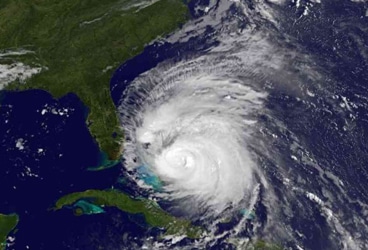
With daily checks of the National Hurricane Center more often than not yielding the report “No Tropical Cyclones at this Time,” it’s easy for sailors to forget that we’re in the peak period for the 2013 Atlantic Hurricane Season.
The annual season, which runs from June 1 through November 30 for the Atlantic Ocean, the Caribbean Sea, and the Gulf of Mexico, so far has experienced 9 named storms (2 minor hurricanes and 7 tropical storms with winds from 40 to 65 miles per hour). Cyclone activity in the eastern North Pacific Ocean has also been below normal.
According to the NHC, the month of August 2013 for the Atlantic basin, “in terms of accumulated cyclone energy, which measures the combined strength and duration of tropical storms and hurricanes … was about 70 percent below the 1981-2010 average.”
The tune is similar for cyclone activity in the eastern North Pacific, which the NHC states “is about 40 percent below normal.”
In spring 2013, the NOAA Climate Prediction Center noted that by its end, the Atlantic season had the potential for producing 13 to 19 named storms, of which 6 to 9 would be hurricanes.
Given the contrast between prognostication and reality, we’re out of harm’s way, right?
Absolutely not, says Isaac Ginis, professor at the University of Rhode Island Graduate School of Oceanography.
“Regarding the slow hurricane season so far, it’s not very unusual,” Ginis says. “We had hurricane seasons in the past that started late. The main factor this year is a stable atmosphere over the tropical Atlantic Ocean where hurricanes form. Also, dry, dusty air moving off the coast of Africa caused conditions hostile to tropical cyclone development. From the hurricane climatology perspectives, storms ordinary form closer to the U.S. coast later in the season, like Hurricane Sandy last year.”
If one agrees with Ginis and others, caution and preparedness should remain front and center.
Those who can’t get enough hurricane information may want to check out the Hurricanes: Science and Society website developed by Ginis, in collaboration with other scientists and educators and funded by the National Science Foundation.
The site bills itself as one of the most comprehensive Internet resources on hurricanes, with information and interactive displays about the science of storms, forecasting, preparation, case studies, and history. Also included is a timeline of significant storms around the world, a section that explains in basic terminology key meteorological and oceanography concepts, as well as teacher and student resources sections for use in classrooms from K-12.
For more about hurricane prep for sailors, check out:
• Hurricane Season 2012
• Damage Avoidance – Hurricane Preparation
• Solo Flight: Preparing our Sailboat for Hurricane Sandy








